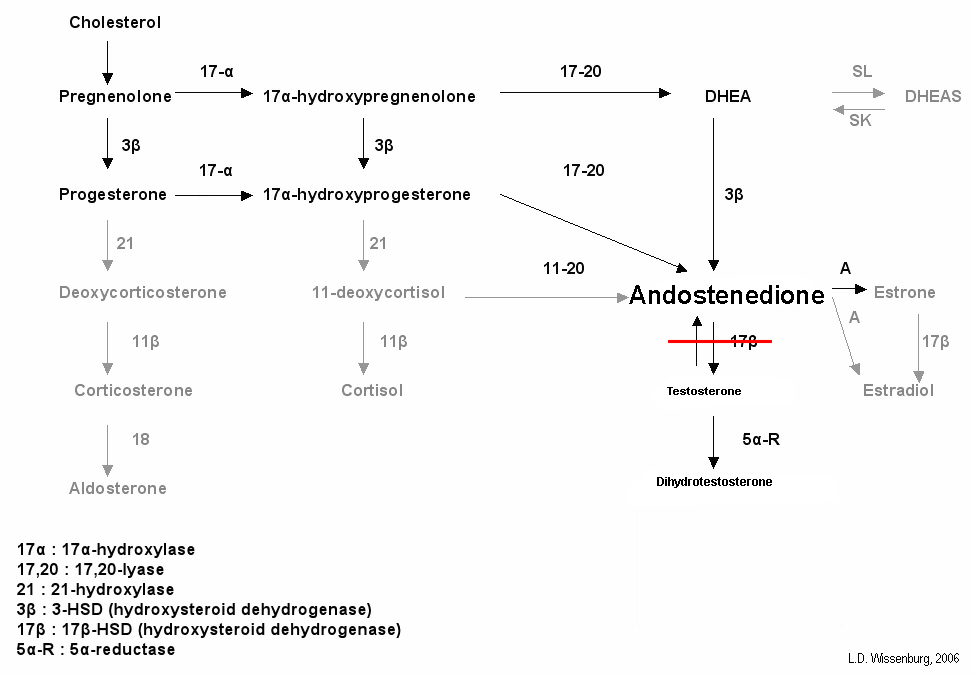17-beta-hydroxysteroid dehydrogenase deficiency
| 17-beta-hydroxysteroid dehydrogenase deficiency | |
| OMIM | 264300 |
|---|---|
| DiseasesDB | 32638 |
For patient information, click here
|
17-beta-hydroxysteroid dehydrogenase deficiency Microchapters |
|
Differentiating 17-beta-hydroxysteroid dehydrogenase deficiency from other Diseases |
|---|
|
Diagnosis |
|
Treatment |
|
Case Studies |
|
17-beta-hydroxysteroid dehydrogenase deficiency On the Web |
|
American Roentgen Ray Society Images of 17-beta-hydroxysteroid dehydrogenase deficiency |
|
Directions to Hospitals Treating 17-beta-hydroxysteroid dehydrogenase deficiency |
|
Risk calculators and risk factors for 17-beta-hydroxysteroid dehydrogenase deficiency |
Editor-In-Chief: C. Michael Gibson, M.S., M.D. [1] Phone:617-632-7753
17-beta-hydroxysteroid dehydrogenase deficiency is a rare disorder of sexual development which can produce impaired virilization (traditionally termed male pseudohermaphroditism) of genetically male infants and children and excessive virilization of female adults. It is inherited as an autosomal recessive condition and is one of the few disorders of sexual development that can affect the primary and/or secondary sex characteristics of both XX and XY persons.
Etiology
17-beta-hydroxysteroid dehydrogenase deficiency type 3 (17βHSD3) is a disorder in testosterone biosynthesis. As a consequence of this disorder, normal male sexual differentiation in impaired as well as virilization. In the Netherlands, 17-beta-hydroxysteroid dehydrogenase deficiency is estimated to occur 1:147.000 newborns.[1]
Clinical characteristics
17-beta-hydroxysteroid dehydrogenase deficiency-3 is clinically characterized by either ambiguous external genitalia or complete female external genitalia at birth; as a consequence of impaired male sexual differentiation in 46,XY individuals. Further investigations on ambiguous genitalia will eventually lead to findings of intersexuality. Severely impaired virilization (often complete absence of male sexual differentiation) can lead to development of female external genitalia. These females (!) are often discovered when there is absence of menarche (first menstruation) and when they begin to virilize during puberty (slowly become more like a man; deepening of the voice, acne, male musculature etc). At careful examination, testis can often be found in the inguinal channel.
Biochemistry
17-beta-hydroxysteroid dehydrogenase deficiency-3 is biochemically characterized by decreased levels of testosterone and increased levels of androstenedione as a result of the defect in conversion of androstenedione into testosterone. This leads to clinically important higher ratio of androstenedione to testosterone (A'dion/T) (see figure).

Genetics
17-beta-hydroxysteroid dehydrogenase deficiency-3 is caused by gene mutations found in the 17BHSD3 gene. 17-beta-hydroxysteroid dehydrogenase deficiency-3 is an autosomal recessive disorder.